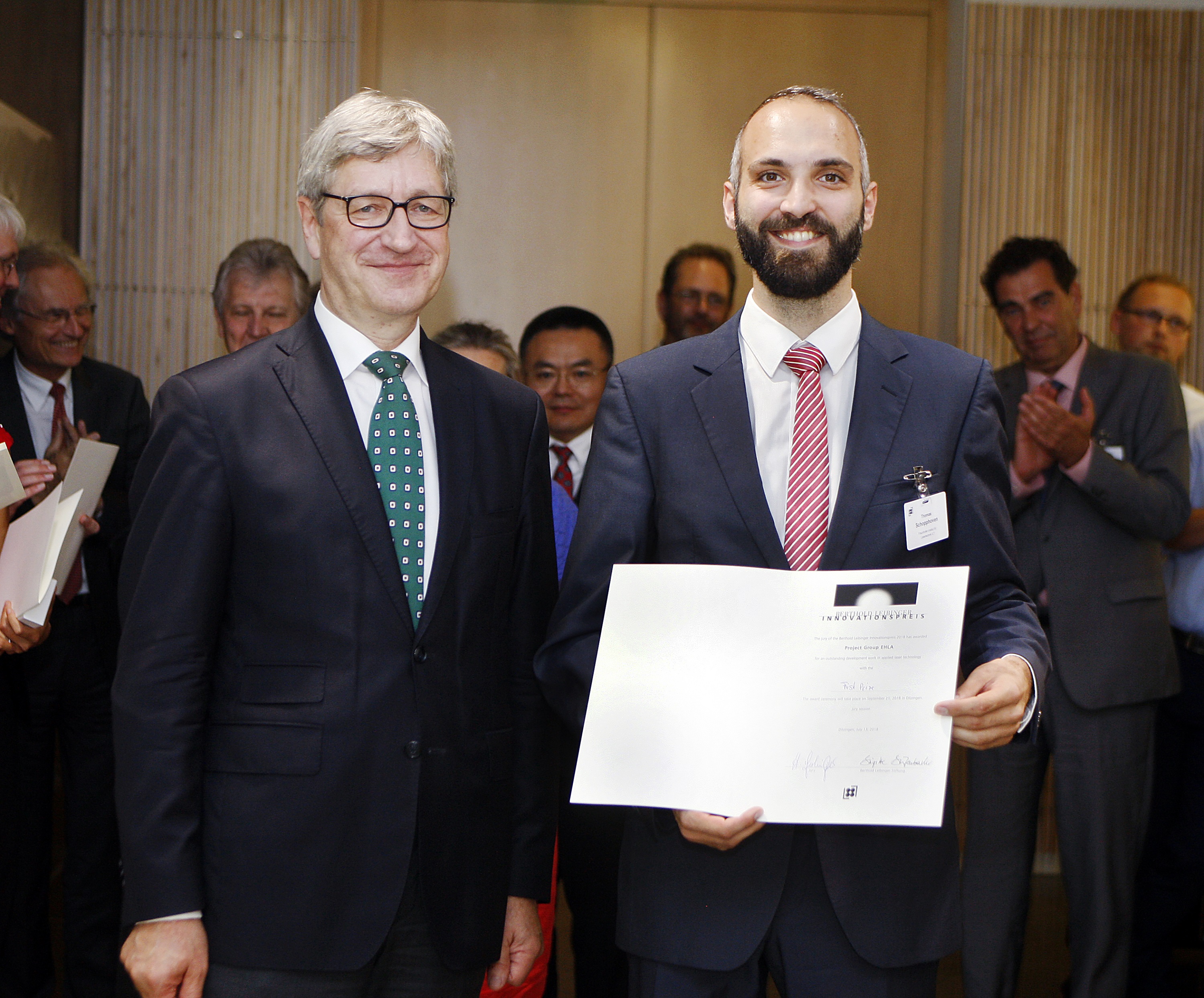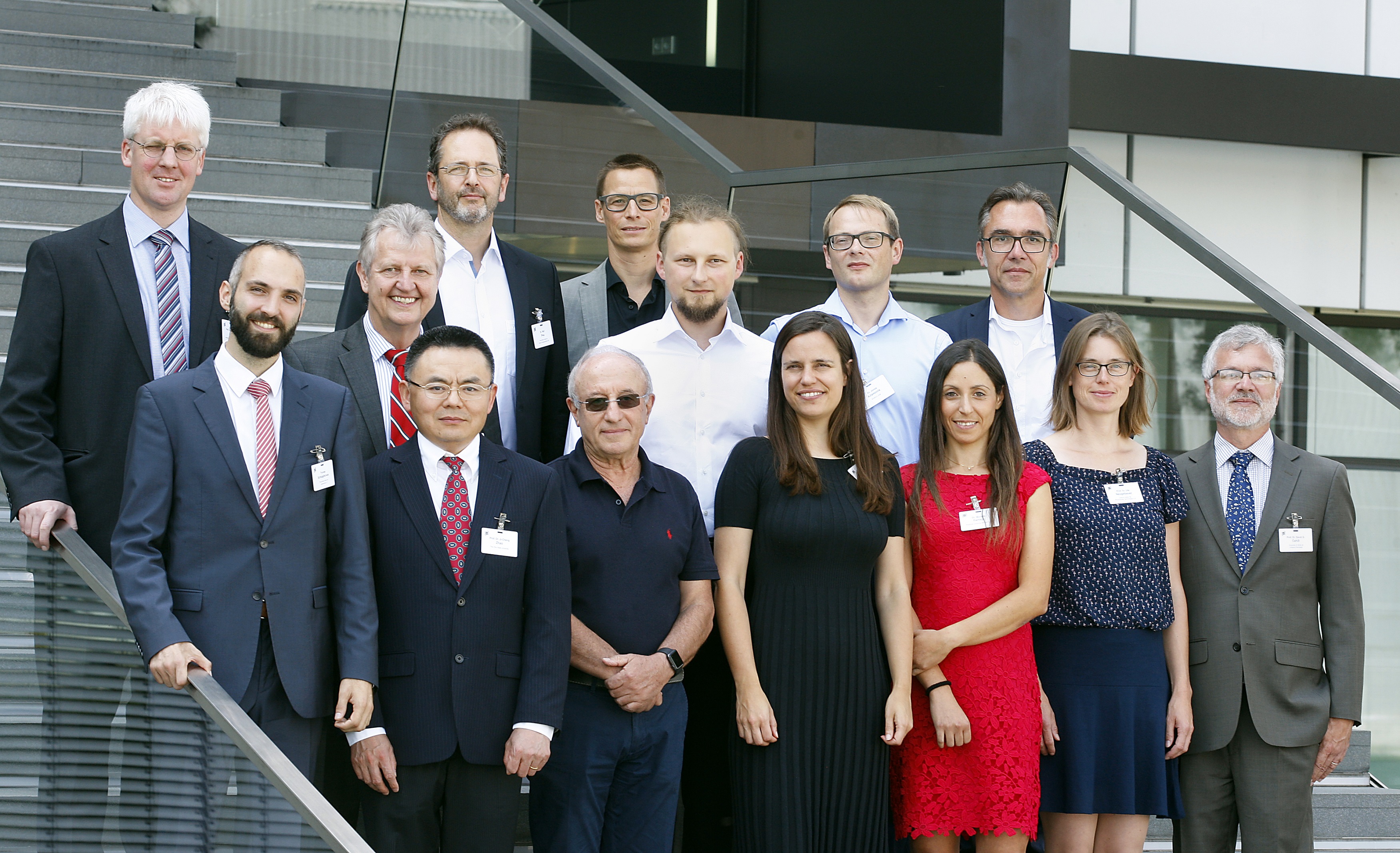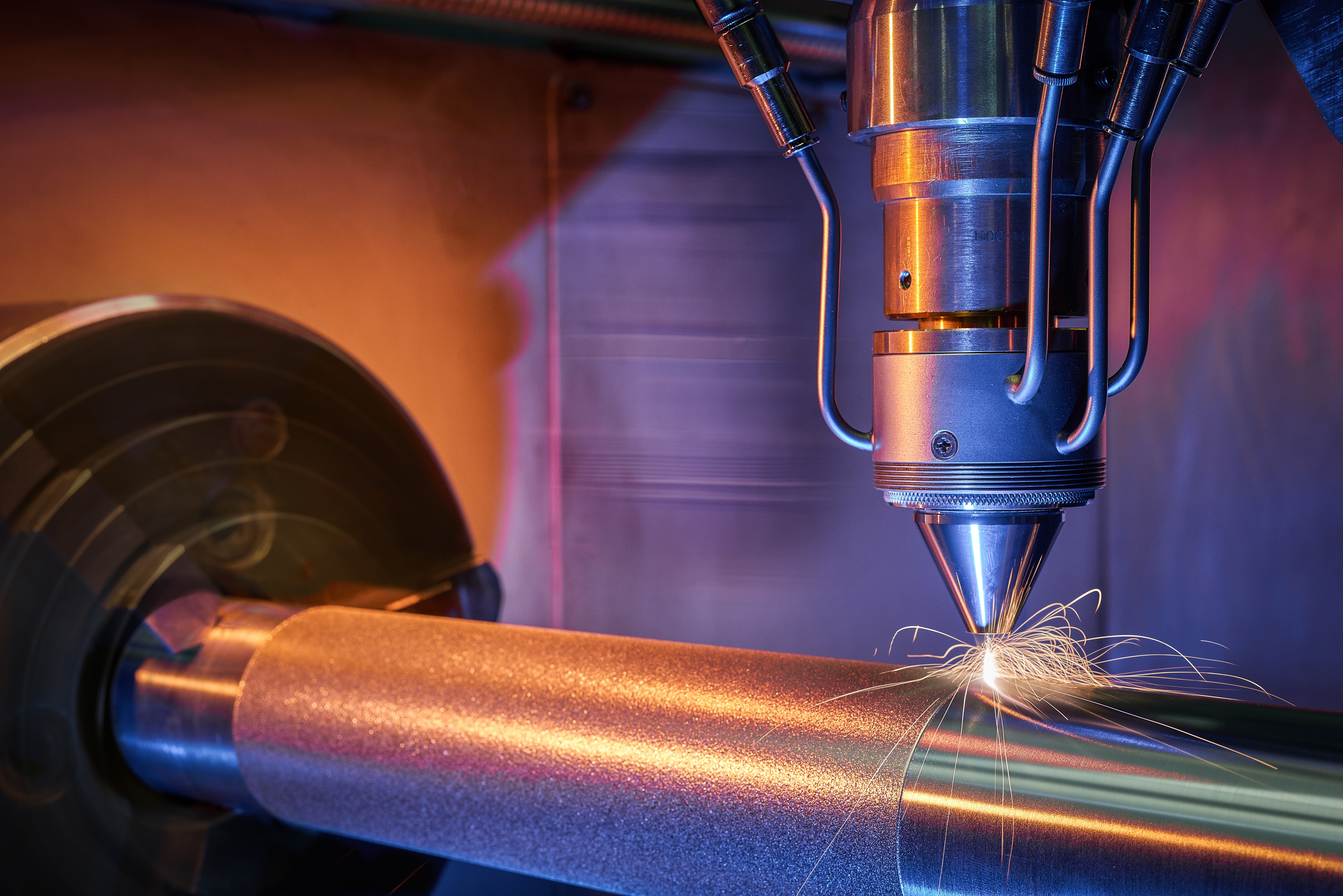First prize of the laser innovation prize awarded by the private foundation Berthold Leibinger Stiftung in Ditzingen
EHLA Research Team Wins Renowned Berthold Leibinger Innovationspreis 2018
The research team of the Fraunhofer Institute for Laser Technology ILT and the Chair of Digital Additive Production DAP of RWTH Aachen University will be honored with the Berthold Leibinger Innovationspreis 2018 for their development of the “Extreme High-Speed Laser Material Deposition” (EHLA). This process can be used to coat, repair or additively manufacture components in a particularly economical and environmentally friendly way. On September 21, the Aachen scientists will receive the first prize of the laser innovation prize awarded by the private foundation Berthold Leibinger Stiftung in Ditzingen, Germany, every other year since 2000 for outstanding research and development on the application or generation of laser light.



he timing was simply right: The research team heard on May 16, 2018 – the first International Day of Light – that it was invited to the jury session in Ditzingen as a finalist. On July 13, 2018, Thomas Schopphoven (Fraunhofer ILT) represented the team which includes his colleagues Andres Gasser (also Fraunhofer ILT) and Gerhard Maria Backes (Chair of Digital Additive Production DAP, RWTH Aachen University). He presented and explained their innovation alongside seven other finalist teams from all over the world.
Friday, July 13th: A lucky day for the EHLA team
This particular Friday turned out to be a lucky day because the EHLA process, developed by the Aachen researchers, convinced the prominent, international jury to choose them for the first prize. On September 21, they will receive the award, endowed with 50,000 euros, at a festive ceremony in the headquarters of the TRUMPF Group in Ditzingen. The second prize goes to the project group DELPHI for the industrial application of femtosecond laser lithography in integrated optics. The third prize honors Prof. Jürgen Popp and Prof. Ute Neugebauer for developing a laser-based method for the rapid determination of antibiotic resistance.
“In the laser industry, this is one of the world’s top-class awards,” says Thomas Schopphoven, head of the Productivity and Systems Engineering team in the Laser Material Deposition Group at Fraunhofer ILT. “We are extremely pleased about the recognition of our work on energy- and resource-efficient production with laser light.” The Aachen researchers were already awarded the Joseph von Fraunhofer Prize in 2017 and the Steel Innovation Prize in 2018 for EHLA.
Success with speed and precision
The innovation is based on a well-known procedure: laser material deposition, which has proven itself as a repair method, e.g. for turbine blades. However, the low process speed has prevented LMD from being used as a standard when large components are coated. Schopphoven and his team have overcome this process-related disadvantage by melting metal powder particles directly in the laser beam during the EHLA process. Thus, the process speed can be increased from a maximum of a few meters per minute to up to 500 meters per minute. At the same time, the layer thickness that can be produced decreases from previously over 500 down to a range from 10 to 250 microns. Thanks to these two innovations, the Aachen invention can be used as an alternative to the usual hard chrome plating with controversial chromium (VI) compounds or thermal spraying.
The concept is successful: Since 2015, the Dutch IHC Vremac Cylinders B.V. from Apeldoorn has been using EHLA to coat hydraulic cylinders for worldwide offshore use. The several hundred cylinders have lengths of up to ten meters and diameters of up to 500 millimeters; they are coated with wear- and corrosion-resistant alloys, which meet the highest demands. ACunity GmbH from Aachen, a spin-off of Fraunhofer ILT, is targeting the offshore market in China. It recently delivered three large EHLA systems to the Chinese company Hebei Jingye Additive Manufacturing Technology Co., Ltd. for environmentally friendly coating of offshore hydraulic cylinders.
First offshore, now automotive industry
But the offshore market is just the beginning – the team leader and scientist is sure. Schopphoven: “The EHLA process is particularly suitable for the automotive industry, such as for the coating of brake discs, which were previously difficult to coat because of the high loads and high demands on efficiency and environmental friendliness.”